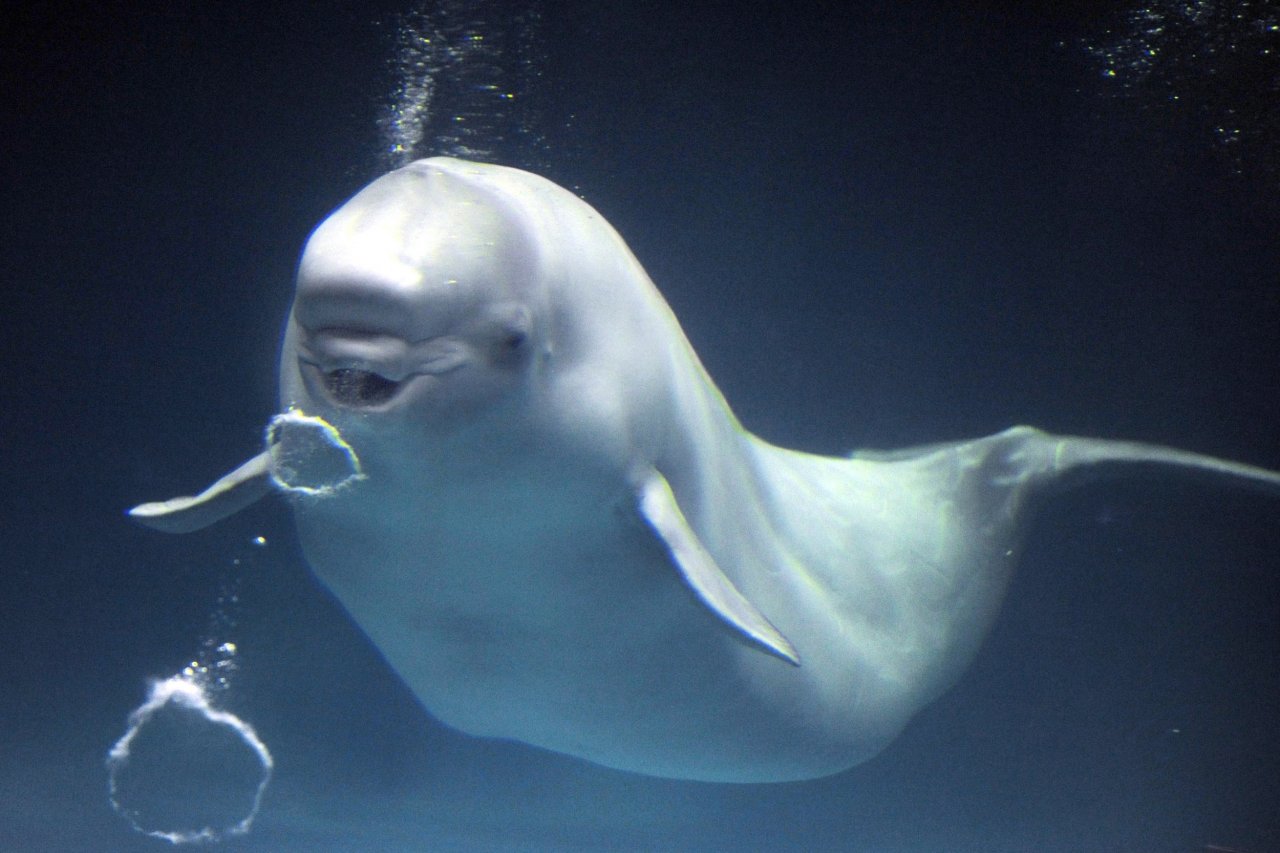Belugas are vocal creatures that can speak in squeaks, squawks, cackles and clicks. They can even imitate the animals and people around them. According to Discovery Magazine, one beluga even started "speaking dolphin" after she moved into a tank with no other animals but bottlenose dolphins.
The four-year-old captive animal had grown up around other beluga whales, but moved to the Koktebel Dolphinarium in Crimea in 2013. There, she had no other belugas to talk to, only dolphins.
Beluga whales and bottlenose dolphins are related—they are both cetaceans, meaning they are in the whale family with orcas and narwhals. They are highly intelligent, social and vocal. But they typically live with their own kind, make their own calls and have their own specific, cultural behaviors.
A few days after arrival, a researcher brought her into a private tank and recorded the sounds that she was making, which were typical of her species. However, as the only beluga in the group, this transplant was now swimming among foreign-language speakers. Both animals make whistling sounds, but they are audibly different. Two months later, the scientists recorded her calls again, and found that she had changed up her repertoire. She made up new whistles and vowels, she whistled like a dolphin and even imitated signature whistles that individual dolphins in her group made.
Belugas will imitate people, other animals and other sounds they hear. They are sometimes even called "sea canaries" because of how they sing. However, this beluga's dolphin-like sounds are particularly interesting because there are practical implications for this new language: They might help her fit in with the group. The fact that she had given up speaking beluga in the absence of other belugas supports this theory.
Scientists at the museum report that the dolphins were originally afraid of their white, bulbous-headed cousin but eventually accepted her. Now, the dolphins like her so much that a newborn dolphin calf likes to swim alongside her.
Belugas are bigger than bottlenose dolphins but smaller than killer whales. They live in the Arctic, and their bulbous head contains an organ called a melon, used for echolocation. They use those sounds to locate holes in the ice so that they can come up and breathe and to hunt in dark waters.
Cetaceans, like humans, are social and intelligent and use sounds to communicate with one another. While imitating human and bird sounds might be playful on the part of the beluga, scientists suspect that she is actually trying to communicate with the dolphins, as those are her only options for friendships in the tank.





















